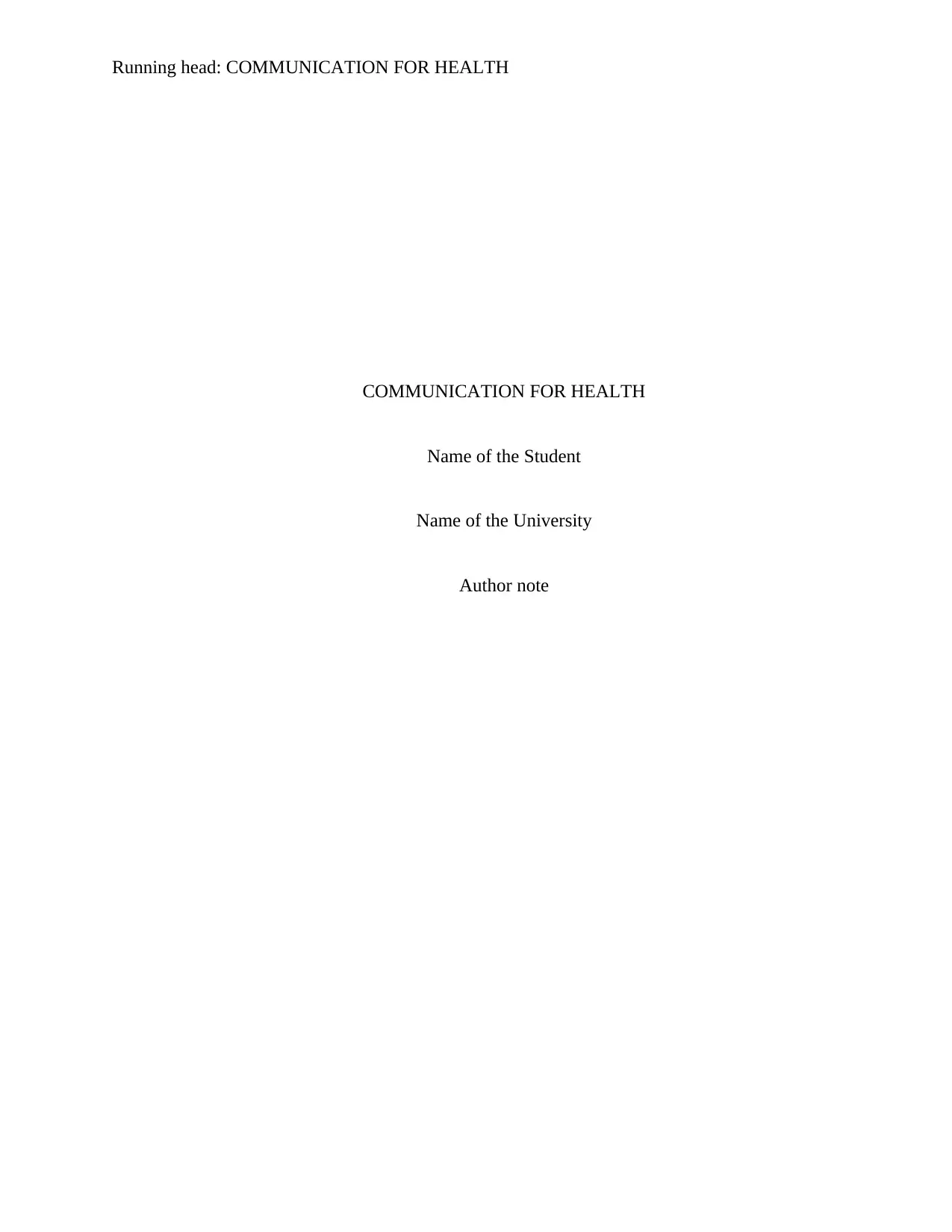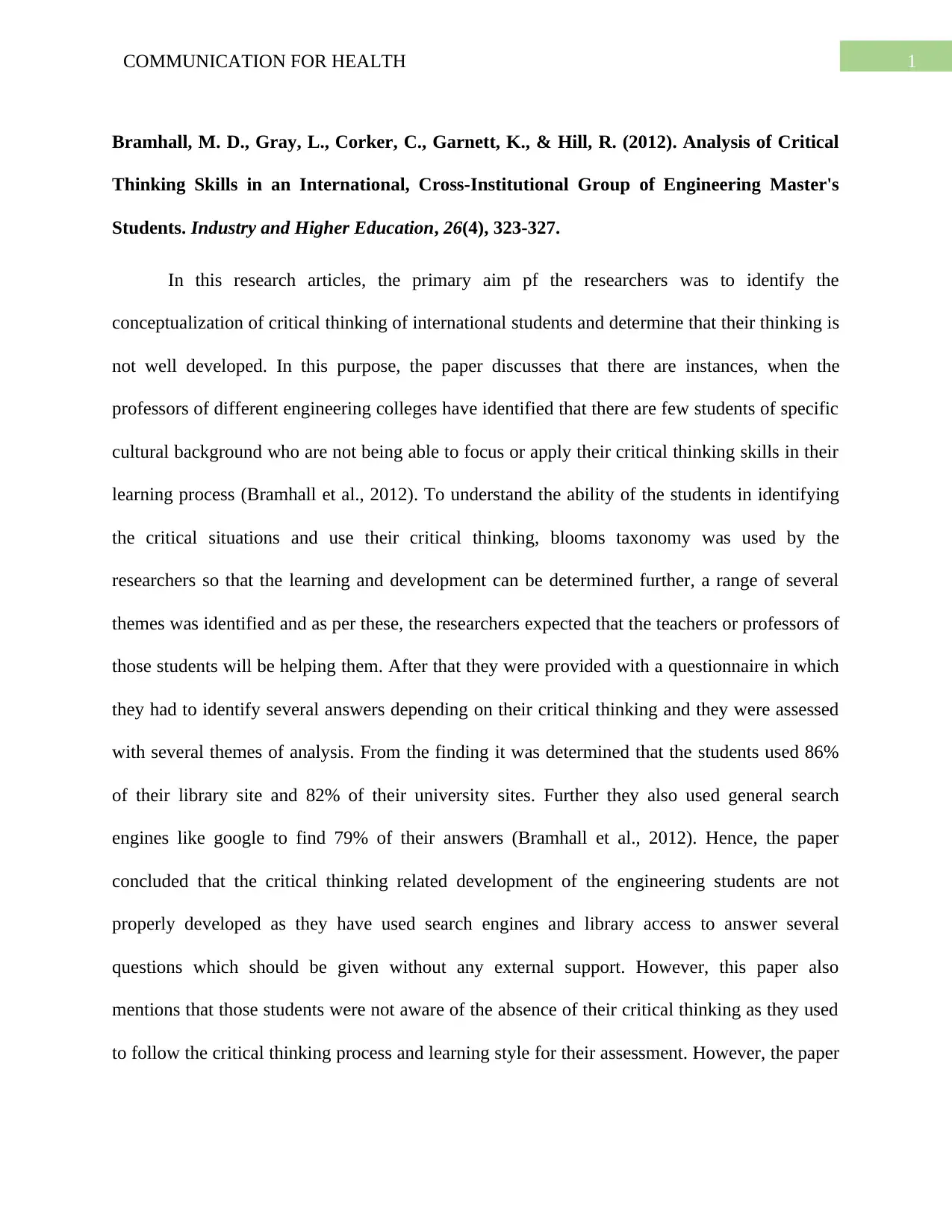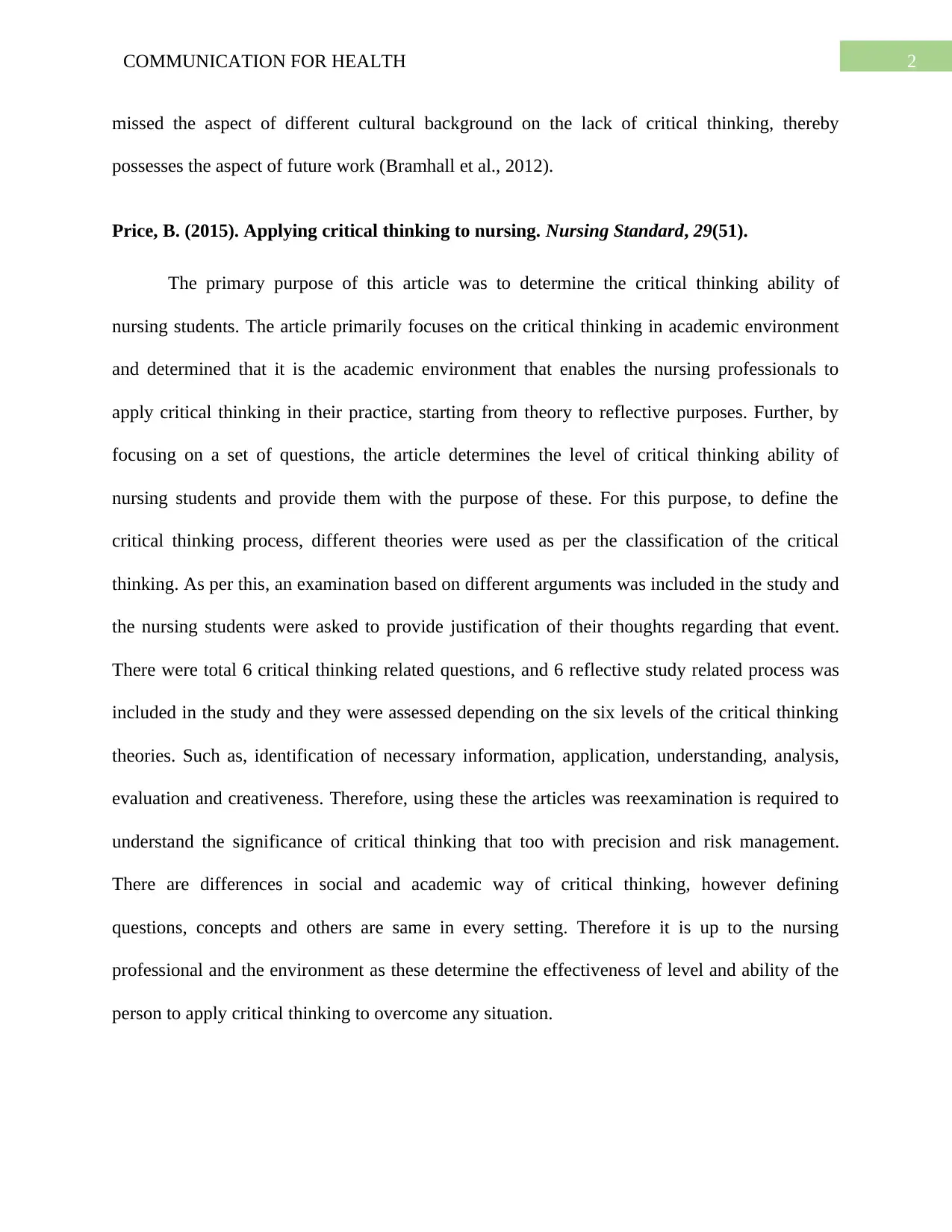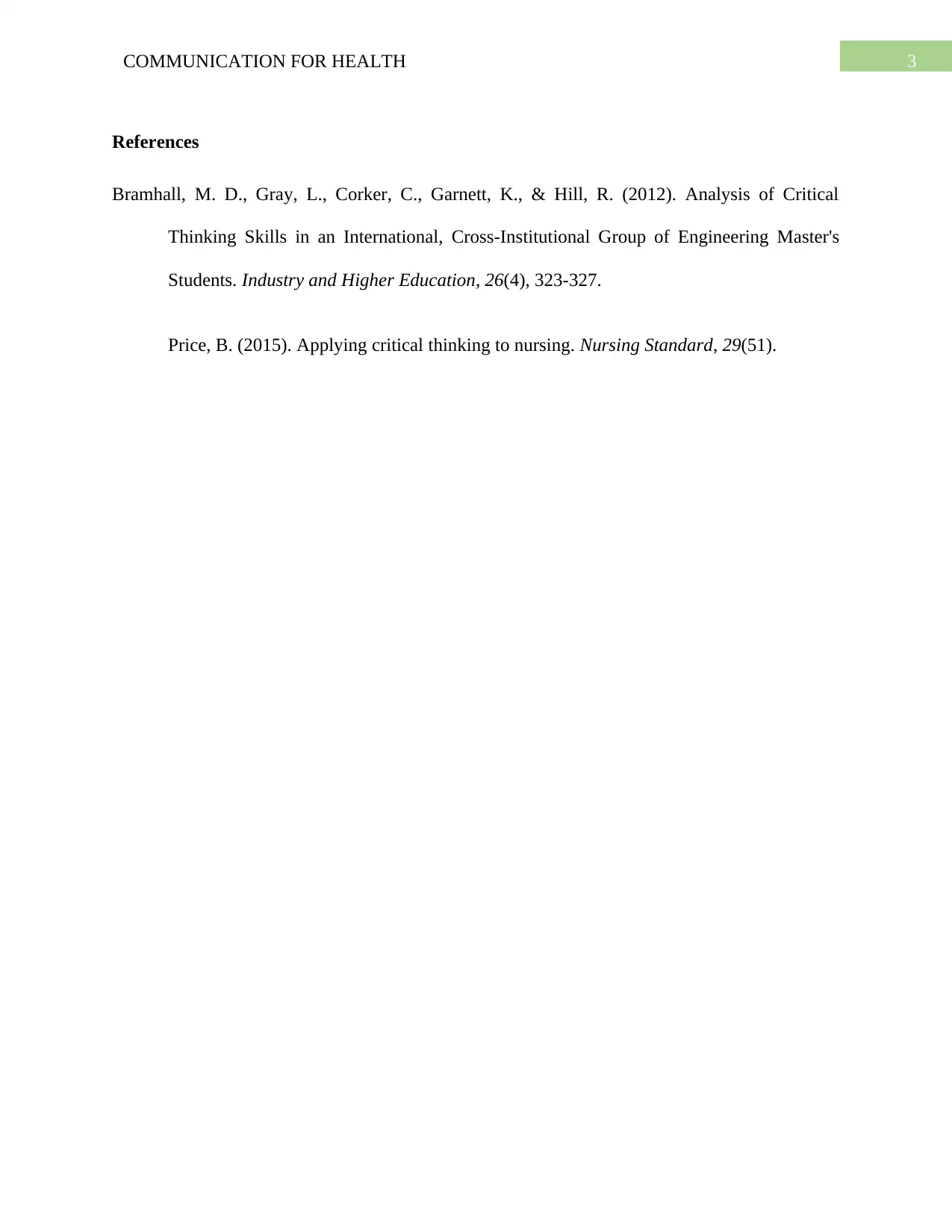Critical Thinking in Nursing and Engineering: A Review of Literature
VerifiedAdded on 2023/06/08
|4
|798
|403
Literature Review
AI Summary
This literature review analyzes critical thinking skills in the context of health communication, drawing upon two key articles. The first article investigates the critical thinking abilities of international engineering master's students, revealing a reliance on external resources like search engines and library databases, suggesting underdeveloped critical thinking skills. The second article focuses on nursing students, exploring how the academic environment fosters critical thinking in their practice. It uses different theories to classify critical thinking and assesses students based on their ability to identify information, apply knowledge, analyze situations, evaluate options, and demonstrate creativity. The review concludes by highlighting the importance of both individual capabilities and environmental factors in effectively applying critical thinking in healthcare settings. Desklib offers a platform to explore similar solved assignments and resources for students.
1 out of 4










![[object Object]](/_next/static/media/star-bottom.7253800d.svg)